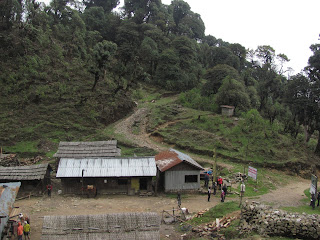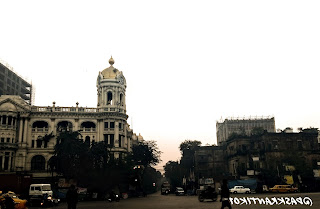Carina Nebula and the Mystic Mountain
One of the largest nebulas, the Carina Nebula hosts three other major nebulas within itself.
The Carina Nebula (also known as the Grand Nebula, Great Nebula in Carina, or Eta Carinae Nebula) is a large, complex area of bright and dark nebulosity in the constellation Carina, and is located in the Carina–Sagittarius Arm. The nebula is approximately 8,500 light-years away from Earth. It is one of the biggest nebulas out there.
This image shows a view of the giant star-forming region in the southern sky known as the Carina Nebula, combining the light from three different filters tracing emission from oxygen (blue), hydrogen (green), and sulfur (red). The colour is also representative of the temperature in the ionized gas: blue is relatively hot and red is cooler. The Carina Nebula is a good example of how very massive stars rip apart the molecular clouds that give birth to them. The bright star near the centre of the image is eta Carinae, one of the most massive and luminous stars known.
The Mystic Mountain is actually a huge cut gas pillar in the Carina Nebula. It was taken by Nasa's Hubble telescope on its 20th anniversary. This structure has a height of three light years. Nascent stars fire off gas jets that steam up the towering peaks.
This photo of the Mystic mountain was taken by Hubble Space Telescope on its 20th anniversary. The area was observed by Hubble's Wide Field Camera 3 on 1–2 February 2010.
The deeper parts of the Carina Nebula
Homunculus Nebula
Within the large bright nebula is a much smaller feature, immediately surrounding Eta Carinae itself, known as the Homunculus Nebula (from Latin meaning Little Man). It is believed to have been ejected in an enormous outburst in 1841 which briefly made Eta Carinae the second-brightest star in the sky.
The optical image of Eta Carinae made by the Hubble Space Telescope reveals two spectacular bubbles of gas expanding in opposite directions away from a central bright region at speeds in excess of a million miles per hour. The inner region visible in the Chandra image has never been resolved before, and appears to be associated with a central disk of high velocity gas rushing out at much higher speeds perpendicular to the bipolar optical nebula.
The Keyhole Nebula
The Keyhole, or Keyhole Nebula, is a small dark cloud of cold molecules and dust within the Carina Nebula, containing bright filaments of hot, fluorescing gas, silhouetted against the much brighter background nebula. John Herschel used the term "lemniscate-oval vacuity" when first describing it and subsequently referred to it simply as the "oval vacuity". The name Keyhole Nebula then came into common use, when popular astronomy writer Emma Converse, in her journal mentioned that this nebula resembles a key hole. Sometimes to describe the whole of the Carina Nebula, this term is used (signifying
"the nebula that contains the Keyhole").

Can you find a keyhole in here? I tried. I could not. Seriously Emma, what were you looking at while writing your article?
This image was taken by Hubble Telescope. The Keyhole nebula is the brightest part of the Carina Nebula. A nebula inside a nebula! Think about it before ever asking "I wonder from where does so many stars come from!"
The Defiant Finger
(Or as I like to describe it: The Holy Fuck!)
This has been photographed by the Hubble Space Telescope.
A small Bok globule in the Keyhole Nebula is nicknamed the "Carina Defiant Finger" due to its shape. The "finger" is formed and is particularly visible from the southern edge because light radiates off the edges the globule. It is thought that the Defiant Finger is being ionized by the bright Wolf–Rayet star WR 25, and/or Trumpler 16-244, a bright blue supergiant. It has a mass of at least 6 M☉, and stars may be forming within it. Like other interstellar clouds under intense radiation, the Defiant Finger will eventually be completely evaporated; for this cloud the time frame is predicted to be 200,000 to 1,000,000 years.
The Carina nebula is home to a lot more than what can be written down in just one blog. Our Hubble will keep on digging. It will keep taking us into the depths of this astronomical wonder. Stay tuned.






Comments
Post a Comment